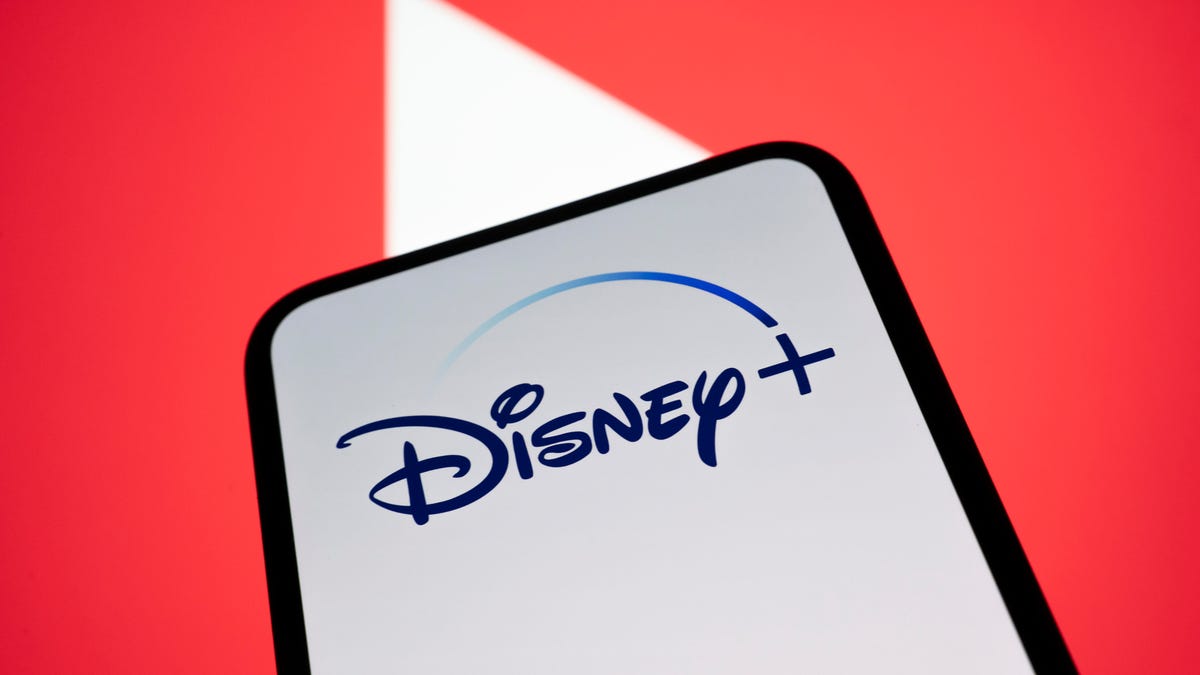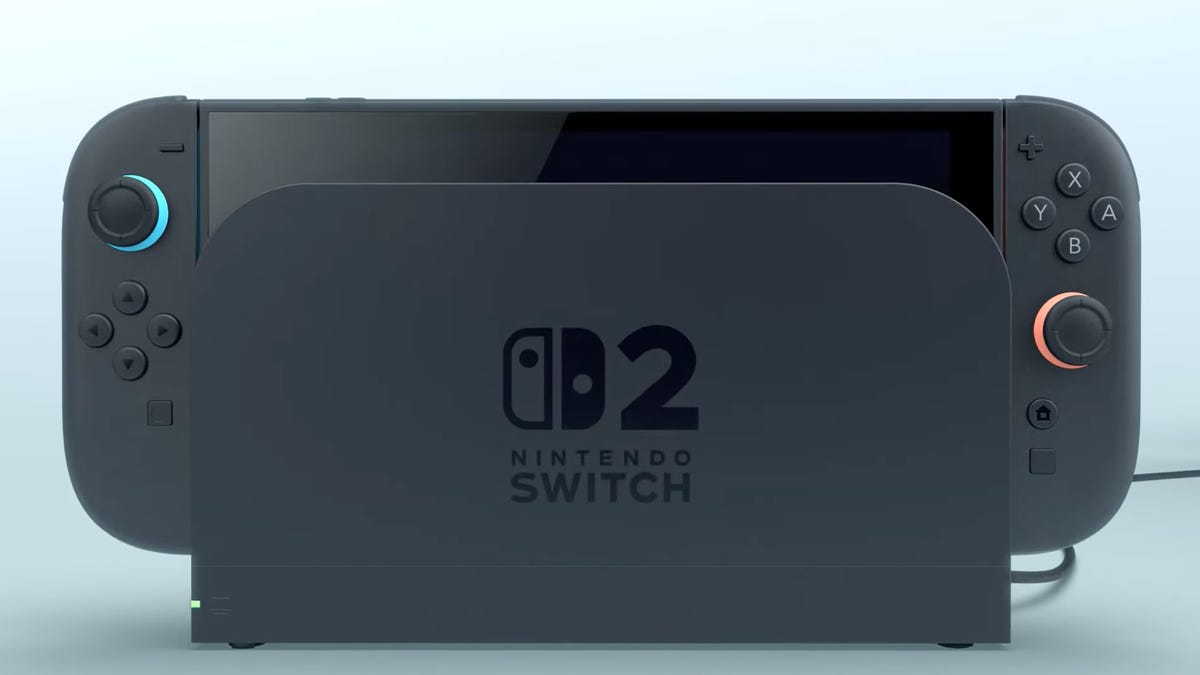Technologies
Gen AI Chatbots Are Starting to Remember You. Should You Let Them?
An AI model’s long memory can offer a better experience — or a worse one. Good thing you can turn it off.

Until recently, generative AI chatbots didn’t have the best memories: You tell it something and, when you come back later, you start again with a blank slate. Not anymore.
OpenAI started testing a stronger memory in ChatGPT last year and rolled out improvements this month. Grok, the flagship tool of Elon Musk’s xAI, also just got a better memory.
It took significant improvements in math and technology to get here but the real-world benefits seem pretty simple: You can get more consistent and personalized results without having to repeat yourself.
«If it’s able to incorporate every chat I’ve had before, it does not need me to provide all that information the next time,» said Shashank Srivastava, assistant professor of computer science at the University of North Carolina at Chapel Hill.
Those longer memories can help with solving some frustrations with chatbots but they also pose some new challenges. As with when you talk to a person, what you said yesterday might influence your interactions today.
Here’s a look at how the bots came to have better memories and what it means for you.
Improving an AI model’s memory
For starters, it isn’t quite a «memory.» Mostly, these tools work by incorporating past conversations alongside your latest query. «In effect, it’s as simple as if you just took all your past conversations and combined them into one large prompt,» said Aditya Grover, assistant professor of computer science at UCLA.
Those large prompts are now possible because the latest AI models have significantly larger «context windows» than their predecessors. The context window is, essentially, how much text a model can consider at once, measured in tokens. A token might be a word or part of a word (OpenAI offers one token as three-quarters of a word as a rule of thumb).
Early large language models had context windows of 4,000 or 8,000 tokens — a few thousand words. A few years ago, if you asked ChatGPT something, it could consider roughly as much text as is in this recent CNET cover story on smart thermostats. Google’s Gemini 2.0 Flash now has a context window of a million tokens. That’s a bit longer than Leo Tolstoy’s epic novel War and Peace. Those improvements are driven by some technical advances in how LLMs work, creating faster ways to generate connections between words, Srivastava said.
Other techniques can also boost a model’s memory and ability to answer a question. One is retrieval-augmented generation, in which the model can run a search or otherwise pull up documents as needed to answer a question, without always keeping all of that information in the context window. Instead of having a massive amount of information available at all times, it just needs to know how to find the right resource, like a researcher perusing a library’s card catalog.
Read more: AI Essentials: 27 Ways to Make Gen AI Work for You, According to Our Experts
Why context matters for a chatbot
The more an LLM knows about you from its past interactions with you, the better suited to your needs its answers will be. That’s the goal of having a chatbot that can remember your old conversations.
For example, if you ask an LLM with no memory of you what the weather is, it’ll probably follow up first by asking where you are. One that can remember past conversations, however, might know that you often ask it for advice about restaurants or other things in San Francisco, for example, and assume that’s your location. «It’s more user-friendly if the system knows more about you,» Grover said.
A chatbot with a longer memory can provide you with more specific answers. If you ask it to suggest a gift for a family member’s birthday and tell it some details about that family member, it won’t need as much context when you ask again next year. «That would mean smoother conversations because you don’t need to repeat yourself,» Srivatsava said.
A long memory, however, can have its downsides.
You can (and maybe should) tell AI to forget
Having a chatbot recommend a gift poses a conundrum that’s all too common in human memories: You told your aunt you liked airplanes when you were 12 years old, and decades later you still get airplane-themed gifts from her. An LLM that remembers things about you could bias itself too much toward something you told it before.
«There’s definitely that possibility that you can lose your control and that this personalization could haunt you,» Srivastava said. «Instead of getting an unbiased, fresh perspective, its judgment might always be colored by previous interactions.»
LLMs typically allow you to tell them to forget certain things or to exclude some conversations from their memory.
You may also deal with things you don’t want an AI model to remember. If you have private or sensitive information you’re communicating with an LLM (and you should think twice about doing so at all), you probably want to turn off the memory function for those interactions.
Read the guidance on the tool you’re using to be sure you know what it’s remembering, how to turn it on and off and how to delete items from its memory.
Grover said this is an area where gen AI developers should be transparent and offer clear commands in the user interface. «I think they need to be providing more controls that are visible to the user, when to turn it on, when to turn it off,» he said. «Give a sense of urgency for the user base so they don’t get locked into defaults that are hard to find.»
How to turn off gen AI memory features
Here’s how to manage memory features in some common gen AI tools.
ChatGPT
OpenAI has a couple types of memory in its models. One is called «reference saved memories» and it stores details that you specifically ask ChatGPT to save, like your name or dietary preferences. Another, «reference chat history,» remembers information from past conversations (but not everything).
To turn off either of these features, you can go to Settings and Personalization and toggle the items off.
You can ask ChatGPT what it remembers about you and ask it to forget something it has remembered. To completely delete this information, you can delete the saved memories in Settings and the chat where you saved that information.
Gemini
Google’s Gemini model can remember things you’ve discussed or summarize past conversations.
To modify or delete these memories, or to turn off the feature entirely, you can go into your Gemini Apps Activity menu.
Grok
Elon Musk’s xAI announced memory features in Grok this month and they’re turned on by default.
You can turn them off under Settings and Data Controls. The specific setting is different between Grok.com, where it’s «Personalize Grok with your conversation history,» and on the Android and iOS apps, where it’s «Personalize with memories.»
Technologies
Disney Exec Says ESPN Outage on YouTube TV May ‘Go for a Little While’
YouTube TV subscribers will miss college football on ESPN, ABC and conference networks for the third weekend straight.

More than two weeks after YouTube TV customers lost access to Disney’s streaming channels — including ABC, ESPN and the ACC and SEC networks — there is no sign of progress in the negotiations between the two entertainment giants.
At Disney’s fourth quarter earnings call on Thursday, Walt Disney CFO Hugh Johnston didn’t offer specifics on the ongoing negotiations, instead noting that «in terms of our (financial) guidance, we built a hedge into that (the YouTube TV outage), with the expectation that these discussions could go for a little while.»
Disney CEO Bob Iger ended the call on a more positive note, saying, «While we’ve been working tirelessly to close this deal and restore our channels to the platform, it’s also imperative that we make sure that we agree to a deal that reflects the value that we deliver.»
The disagreement causing the ABC and ESPN outage stems from the «carriage fee» that YouTube TV pays Disney to broadcast its channels. Disney has faced similar negotiating standoffs with other broadcasters in recent years, including an earlier 2021 outage on YouTube TV that was resolved in two days.
Don’t miss any of our unbiased tech content and lab-based reviews. Add CNET as a preferred Google source.
Disney says YouTube TV isn’t paying enough to stream its channels. YouTube TV, owned by Google, has the most subscribers among all internet TV providers, with over 9 million. Hulu, owned by Disney, is second with 4.3 million subscribers through its Hulu + Live TV offering.
«The deal that we have proposed is equal to or better than what other large distributors have already agreed to,» Iger also said Thursday.
While the two sides wrangle over the fees, they risk further losses. Nearly a quarter of YouTube TV subscribers (24%) have canceled or intend to cancel their subscription because the service «no longer delivers the core content they signed up for,» according to a survey cited by Variety.
Disney, meanwhile, is losing an estimated $30 million in revenue per week while its channels are unavailable on YouTube TV, according to a Morgan Stanley research note cited by Variety. That’s a significant chunk of change because each week Disney’s networks are dark on YouTube TV, Disney’s adjusted earnings per share drop by 2 cents, analysts say.
When will ESPN, ABC and other Disney channels return to YouTube TV?
Disney is no stranger to carriage fees feuds, and as with previous disputes, negotiations are under wraps, and how long it will continue is anyone’s guess. Disney’s contract conflict with Sling TV in 2022 lasted just two days, while the one with Spectrum/Charter in 2023 wasn’t resolved for 10 days.
Disney’s contract conflicts from previous years were mostly resolved in a week or two, but Google has considerably more bargaining power than those other platforms.
Thursday marked 14 days that Disney’s channels had been blacked out on YouTube TV — a day longer than the Disney outage on DirectTV last year. How much longer this outage will continue is unknown, but the Morgan Stanley analysts who pegged Disney’s weekly losses at $30 million sounded an optimistic note in predicting that the outage will be resolved later this week.
When a deal is reached between Disney and YouTube, the missing channels will return «in a matter of hours,» according to Variety.
What are Disney and YouTube TV saying about the dispute?
On Oct. 30, YouTube TV posted on X, «Members, when we renew our contracts with network partners, we advocate for fair pricing to offer you the best TV experience.»
«Google’s YouTube TV has chosen to deny its subscribers the content they value most by refusing to pay fair rates for our channels, including ESPN and ABC,» Disney said in a statement to CNBC.
In a memo to employees on Oct. 31 that was also reported by CNBC, Disney accused YouTube TV of deleting «previously recorded shows and events from their subscribers’ libraries.»
«YouTube TV and its owner, Google, are not interested in achieving a fair deal with us,» Disney Entertainment co-chairs Dana Walden and Alan Bergman and ESPN Chairman Jimmy Pitaro said in the memo. «Instead, they want to use their power and extraordinary resources to eliminate competition and devalue the very content that helped them build their service.»
Disney is also asking its viewers to ask YouTube TV to bring back its broadcasting via the keepmynetworks.com site.
Which Disney channels were removed from YouTube TV?
Sports fans aren’t the only viewers left sidelined by the loss of Disney channels from YouTube TV. Here are all the channels that have been removed from the streaming service:
- ABC
- ABC News Live
- ACC Network
- Baby TV Español (Spanish Plan)
- Disney Channel
- Disney Junior
- Disney XD
- ESPN
- ESPN Deportes (Spanish Plan)
- ESPNews
- ESPNU
- ESPN2
- Freeform
- FX
- FXM
- FXX
- Localish
- Nat Geo
- Nat Geo Mundo (Spanish Plan)
- Nat Geo Wild
- SEC Network
How can YouTube TV subscribers watch football games during the Disney outage?
YouTube TV subscribers with an aerial TV antenna can still watch Monday Night Football and college football games on ABC if they live close enough to receive an over-the-air broadcast signal from a local ABC affiliate.
Other than that, the only real option for viewers who want to watch all of the college football and basketball games this weekend and Monday Night Football at home is to subscribe to another service that provides ABC and ESPN, including ESPN+, Sling TV, Hulu + Live TV, Fubo or DirecTV Stream.
Sling TV offers a $5 Day Pass that could be a good option for viewers who want to watch one specific game, as well as a $10 Weekend Pass that would give you college football and basketball games for both days.
For those looking to find football games at local establishments, this handy app can help you find places that are showing the games.
YouTube TV has given $20 bill credits to subscribers
YouTube TV had promised subscribers a $20 credit for the streaming service if the Disney channels outage continued for an extended period, and on Sunday, the streaming service announced the details of that credit.
Some YouTube subscribers receive the $20 credit automatically, and others need to claim it online. According to a YouTube spokesperson, subscribers who pay with Google Play billing or through their mobile service should receive the $20 credit automatically.
If you need to claim the $20 credit, you should have received an email from YouTube TV. To redeem your the credit, follow these steps:
- Log in to YouTube.com with a web browser
- Click or tap on your profile picture
- Click or tap Settings.
- You can also directly browse to the URL at https://tv.youtube.com/settings/service_updates.
- At the bottom of the menu on the left, select Updates.
- On the following screen, which explains the Disney channels outage, click or tap the blue button marked Claim Credit.
Emails from YouTube TV started going out Sunday night and several Reddit posters have already reported receiving the $20 credit. All of the credits for YouTube TV subscribers should be issued by Wednesday, Nov. 12, according to Variety.
The $20 credit will be applied to your next billing cycle.
We asked YouTube TV if additional billing credits would be offered to subscribers if the outage continues. A spokesperson replied, «This is a situation that is evolving, and we will let subscribers know of future additional credit offers. Our main priority is to reach an agreement that restores Disney’s content to YouTube TV.»
Correction, Nov. 5: An earlier version of this story failed to note that Sling TV day and weekend passes can be used to watch local ABC affiliates only in certain markets.
Technologies
Nintendo Says Newest Switch 2 Update Didn’t Deliberately Brick Third-Party Docks
Third-party dongle docks appear to be failing after the 21.0.0 update.

Nintendo released a new Switch 2 firmware update on Tuesday that came with a few albeit not significant changes to the portable console. It appears, however, this update might have bricked some third-party docks for the console in the process.
Switch 2 owners on social media say their third-party docks are no longer working with their systems after downloading firmware update 21.0.0, as first reported by Kotaku on Thursday. It’s unclear what in the firmware may have caused the issue, but it does appear that it primarily affects dock dongles, which plug directly into the Switch instead of the typical cradle-style docks that require the console to be placed in them.
Nintendo says it doesn’t have any intention to hinder or invalidate third-party docks.
«Nintendo Switch 2 outputs audio/visuals once it detects that it is docked into a Nintendo Switch 2 Dock. Nintendo Switch does the same, outputting audio/visuals once it detects that it is docked into a Nintendo Switch Dock,» the company said in an emailed statement to CNET.
Don’t miss any of our unbiased tech content and lab-based reviews. Add CNET as a preferred Google source.
What third-party Switch 2 docks are affected?
As of now, the only docks that appear to have issues are the third-party dongle docks. Standard docks and the official dock from Nintendo are fine.
Can these Switch 2 dock dongles be fixed?
It’s unclear if another Switch firmware update can address the problem. It’s also unlikely that the manufacturers of these docks will be able to provide a firmware update to address any problems.
This is not the first time third-party docks have had compatibility issues with a Switch console. In 2018, Nintendo released the 5.0.0 update for the original Switch, which not only caused some docks to stop working, it also led to consoles using those docks having problems. A 2019 report from Wired found that some third-party docks tried to emulate the same quick connections to the USB-C port on the Switch like with the official Nintendo dock. If the hardware has a slight manufacturing defect where the connections weren’t firmly connected, it could cause the USB-C power port on the Switch to fail.
Nintendo does advise Switch owners to use official Nintendo products for the system.
What else changed in the Switch 2 firmware update 21.0.0?
The latest Switch 2 firmware update went live on Tuesday and made a series of quality-of-life changes to the Switch 2, such as changing certain text in the settings to provide a better description of their functions; adding an option to cancel multiple software downloads at once; and adding icons on software to indicate whether it’s a physical or a digital version. This last change refers to the Game-Key Card feature for certain Switch 2 games that do not have the entire game on the cartridge and require downloading the game files.
Technologies
Metroid Prime 4 for Switch 2 Delivers the Biggest Evolution the Franchise Has Seen
The next chapter in the Metroid saga lands in December with a major shift for the series. Here’s everything we know.

Metroid Prime 4: Beyond seemed like it would never come out since it was first teased in 2017, but the newest adventure featuring Samus Aran is less than a month away. Nintendo released a trailer Friday that highlights the biggest changes coming to the series.
In Metroid Prime 4, Samus responds to a distress call from the Galactic Federation, which is under attack by a bounty hunter known as Sylux. A disaster happens, transporting her to the planet Viewros, and now she has to use her new psychic powers and some help from allies to survive the planet in order to find her way home.
Metroid Prime 4: Beyond Trailer
When does Metroid Prime 4 come out?
Metroid Prime 4 will be released on Dec. 4.
What consoles will Metroid Prime 4 be released on?
Metroid Prime 4 will be available for the original Switch for $60 and on the Switch 2 for $70. For those with the original Switch now, but who think they might get a Switch 2 for the holidays, the Switch version can be upgraded to the Switch 2 version for $10.
What’s new in Metroid Prime 4?
The biggest change in Metroid Prime 4 is the open world. Previous Metroid Prime games usually confined Samus to caverns, temples or a ship, but this time around, she’ll be able to explore the world of Viewros. To help her traverse across the world, Samus can ride her bike called Vi-O-La.
Samus is known for her arsenal of powerful weapons, but in Metroid Prime 4, she will have new psychic abilities. These abilities will let her manipulate energy and activate machinery with just her mind.
Scattered across Viewros are Galactic Federation troopers, whom Samus will rescue but also fight alongside. This marks one of the few times when Samus isn’t battling alien forces on her own.
Will the Switch 2 version have any unique features?
A new feature only available with the Switch 2 version of the game is mouse controls. Players can use a Joy-Con 2 as a mouse by placing it on a hard surface, which some gamers insist is the proper way to play FPS games. If that isn’t of interest, both Metroid Prime 4 versions will make use of the Joy-Cons motion controls or a compatible gamepad, such as the Switch 2 Pro Controller.
-

 Technologies3 года ago
Technologies3 года agoTech Companies Need to Be Held Accountable for Security, Experts Say
-

 Technologies3 года ago
Technologies3 года agoBest Handheld Game Console in 2023
-

 Technologies3 года ago
Technologies3 года agoTighten Up Your VR Game With the Best Head Straps for Quest 2
-

 Technologies4 года ago
Technologies4 года agoBlack Friday 2021: The best deals on TVs, headphones, kitchenware, and more
-

 Technologies4 года ago
Technologies4 года agoVerum, Wickr and Threema: next generation secured messengers
-

 Technologies4 года ago
Technologies4 года agoGoogle to require vaccinations as Silicon Valley rethinks return-to-office policies
-

 Technologies4 года ago
Technologies4 года agoOlivia Harlan Dekker for Verum Messenger
-

 Technologies4 года ago
Technologies4 года agoiPhone 13 event: How to watch Apple’s big announcement tomorrow
